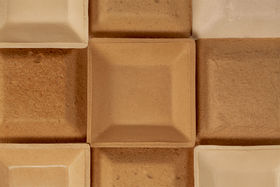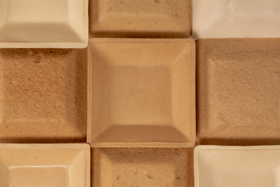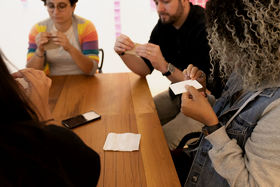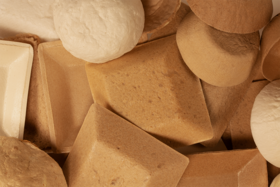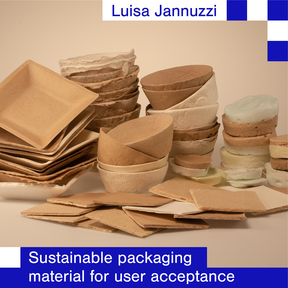
The fate of packaging, after initial use, is mostly in the hands of the consumer and subject to user behaviour. You can design the best and most sustainable packaging ever, but when not disposed of correctly, it's not sustainable. Therefore, it's important to understand how consumers interact with the packaging even after consumption, in order to design better packaging that will have a smaller environmental footprint.
Luisa Jannuzi was able to combine all of her interests in her thesis project by developing her own biodegradable styrofoam-like packaging material and testing it with focus groups in Finland and Brazil.
With a BA in industrial design and minors in product and graphic design, Luisa has previously worked at a publishing company in Brazil and subsequently as a product designer at an architecture studio in India.
With a strong desire to integrate sustainability into her design practice, she chose the Master in Creative Sustainability program in which she found that packaging was an interesting and tangible option to relate to product design; and a way to connect to the mindset and values of sustainable industries.
By utilising communication without text and images, Luisa analyses the packaging material itself and considers its various components. She then groups them accordingly; glossiness, white colours and transparency often seem unsustainable, whereas brown colours, textured surfaces and ugly shapes are more often associated as sustainable.
From working with a focus group in both Finland and Brazil, Luisa has learned that cultural backgrounds play an important role in how consumers interpret and understand packaging and that sustainable materials should be adjusted accordingly.
Luisa's final product, made from fully biodegradable cellulose-based materials, resembles styrofoam and is likely to offer thermal protection that is great for preserving food temperature. Based on user research, the final prototypes attempt to communicate sustainability and invoke consumers' trust through the use of the known characteristics of "more traditional" materials.
With many thanks to:
All focus groups participants, Jouni Paltakari, and CHEMARTS
Luisa Jannuzzi
Aalto University
Master's Programme in Creative Sustainability
Sustainable Packaging Material for User Acceptance
Near futures – online exhibition
Near futures, exhibition tribute to the academic year 2019–2020 graduates








